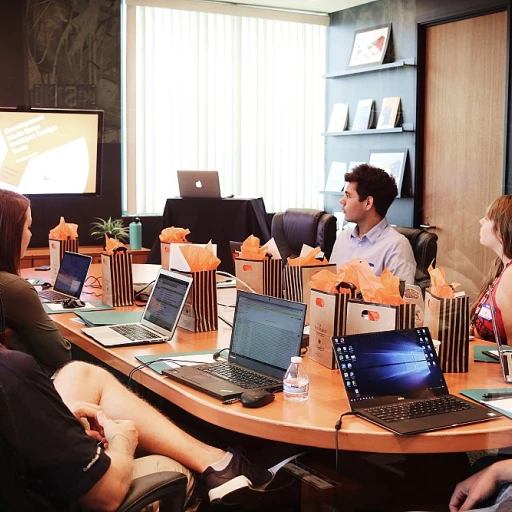
Understanding Continuous Learning
Continuous learning plays a vital role in both personal and academic development. This lifelong process of acquiring new skills and knowledge enhances our ability to adapt in an ever-evolving world. High school students who embrace continuous learning are better equipped to tackle academic challenges and attain improved academic performance. But what does continuous learning entail, especially within the school context?
Why Continuous Learning Matters
Incorporating continuous learning into the education system transforms it from a fixed curriculum to a dynamic environment of exploration. This approach supports high school students in nurturing curiosity, fostering creativity, and applying knowledge across diverse domains. By engaging with different research topics, students can delve deeper into subjects such as climate change, artificial intelligence, or the effects of social media on mental health.
As students explore these topics for their research paper projects, they are also honing essential skills like critical thinking, analytical reasoning, and adept writing. For students aiming to navigate the continuously evolving landscape of higher education and career opportunities, embracing continuous learning is an integral strategy that will serve them well beyond high school.
Preparing for a Future in Continuous Learning
To understand continuous learning, consider the wave of technological advances that shape our future workplaces. For instance, emerging fields like artificial intelligence require a strong foundation in diverse disciplines, prompting a shift towards interdisciplinary study approaches among school students. This casts a spotlight on the importance of choosing which coding language is the easiest to learn to set the groundwork for future career paths in these fields.
The ultimate impact of integrating continuous learning within the educational framework extends far beyond academic achievements. It encourages students to adopt a lifelong learning mindset, paving the way for a well-rounded ability to tackle complex real-world challenges. Such learning habits empower students to navigate future uncertainties with agility and confidence.
Choosing the Right Research Topic
Diving Into Impactful Research Topics
Choosing the right research topic is a key step for high school students in the academic journey. It influences the direction and depth of the research paper, affecting both the student's engagement and ultimate success. The role of a research topic extends beyond the paper itself, impacting the student's learning experience and academic performance. To begin with, high school students should consider their personal interests and passions. These can offer a wealth of research opportunities that resonate on an individual level. Identifying what excites them will help students maintain motivation throughout the research process. Another crucial aspect is to evaluate the potential impact of the chosen topics. For instance, researching the effects of climate change can raise awareness and encourage practical actions. On the other hand, exploring mental health or the influence of social media can address significant social issues. High school students should also gauge the feasibility of their topics. Certain topics might require access to resources or data that are not readily available. Academic, social, and health implications are important to consider, as these can broaden the societal reach of the paper topics. Incorporating interdisciplinary approaches can also be beneficial. By blending elements from different areas of education, such as health and technology, students can develop a more comprehensive understanding and innovative solutions for their research. Ultimately, a good research topic should spark curiosity, provide learning opportunities, and offer value beyond academic performance, preparing students for higher education and future academic endeavors. Exploring various research topic guidelines can offer invaluable insights for students looking to refine their choices.Interdisciplinary Approaches
Embracing Interdisciplinary Perspectives in Research
Interdisciplinary approaches have been increasingly recognized for their valuable contribution to education, notably within high school settings. By converging multiple disciplines in research topics, students gain a broader perspective that enhances their critical thinking and problem-solving skills. This methodology not only sharpens the focus of academic performance but also prepares students for the complexities of higher education and future challenges. Such an approach encourages school students to engage with diverse subjects like social media's impact on mental health or the role of artificial intelligence in addressing climate change. While a solitary perspective might limit their understanding, integrating multiple disciplines enriches the research paper and fosters a well-rounded development. For instance, considering the social implications and environmental aspects of a given topic can provide insights that a single-disciplinary focus may overlook.- Benefits of Interdisciplinary Research:
- It cultivates a deeper understanding of complex issues.
- It enhances a student’s ability to connect academic principles with real-world applications.
- It promotes the critical evaluation of diverse perspectives, leading to more innovative solutions.
Incorporating Technology in Research
Embracing Technological Tools in School Research
The integration of technology into educational research has transformed the landscape of learning and academic inquiry. For high school students engaging in research projects, the use of technology not only enhances the learning experience but also allows them a glimpse into the tools used in higher education. From data collection to presentation, technology plays a critical role in shaping research outcomes and developing necessary skills.
One way technology can impact research is through the use of software and apps that aid in data analysis and visualization. Students can utilize programs that allow for complex data manipulation and the creation of dynamic visual aids, which can enhance the comprehension of research data and bring their findings to life. Furthermore, online platforms provide a reservoir of information, enabling students to explore a diverse range of research topics from climate change to the effects of social media on mental health.
Communication tools have also revolutionized the way students can collaborate on school research. Technologies such as video conferencing and collaborative software allow students to work together seamlessly, irrespective of geographical boundaries. This collaborative approach not only fosters teamwork but also enhances critical thinking skills, as students learn from diverse perspectives.
Moreover, the use of digital libraries and academic resources online provides access to a wealth of information previously restricted to physical libraries. This accessibility empowers students to explore complex academic paper topics efficiently, bridging the gap between high school and higher education research practices.
For those interested in understanding the role of artificial intelligence in research, exploring how AI tools can facilitate data processing and analysis is invaluable. The ability to recognize patterns and extrapolate meaningful conclusions from large datasets represents a significant skill in today's data-driven world.
Integrating technology effectively into research projects not only elevates the academic performance of high school students but also prepares them for future educational pursuits. It encourages an environment where interactive learning and innovation thrive, setting the foundation for continuous exploration and discovery.
Developing Critical Thinking Skills
Building Your Critical Thinking Arsenal
Developing critical thinking skills is an essential part of any student's educational journey. When high school students embark on research projects, honing these skills becomes even more crucial. They not only aid in analyzing a good research topic but also play a vital role in evaluating the information gathered, understanding implications, and drawing sound conclusions.- Understanding the Role of Critical Thinking: By critically evaluating research topics, students are equipped to delve deeper into their chosen subject matter. Whether it's examining the effects of climate change on mental health, or understanding the social impact of artificial intelligence, these skills help navigate complex academic landscapes.
- Discerning Information Sources: With the constant influx of data from various sources, including social media, it is imperative for students to discern credible information. This entails assessing the reliability of data, checking the validity of existing research papers, and evaluating the overall academic merit of different viewpoints.
- Fostering Analytical Power: Critical thinking enables students to analyze and interpret information logically. For example, while writing about the academic performance indicators of students exposed to various educational methods, critical thinking skills ensure that arguments are well-structured and backed by evidence.
- Improving Problem-Solving Abilities: Engaging with a range of school research topics cultivates an environment for creative problem-solving. This not only enhances academic performance but prepares students for higher education challenges, equipping them with tools to tackle intricate research topics and paper topics in the future.
- Applying Real-World Contexts: Linking paper topics to current issues, like the role of health education in combating social inequities, allows school students to appreciate the broader societal impacts of their research. This dual focus on research and real-world application promotes a healthier, more well-rounded educational experience.
Presenting Research Findings
Enhancing the Presentation of Research Findings
Presenting research findings effectively is a crucial component in the academic journey of high school students. Whether in written form, a presentation, or through digital media, conveying the outcomes of a school project with clarity and engagement is essential. Here are some strategies to improve presentation skills:- Understand Your Audience: Knowing who will be reading or listening is crucial. Tailor your content to fit the knowledge level and interests of your audience, be it peers, educators, or the general public.
- Organize Your Content: A well-organized research paper or presentation ensures that your audience can follow the flow of your argument. Start with an introduction that includes the research topic, follow with the methodology and findings, and conclude with the implications.
- Use Visual Aids: Visuals such as charts, graphs, and slides can help in emphasizing key points. This is particularly helpful when dealing with topics related to climate change or mental health statistics where data visualization can enhance understanding.
- Create an Engaging Narrative: Developing a story around your findings can capture interest. Whether discussing the social impact of artificial intelligence or the effects of social media on mental health, weaving facts into a compelling story makes the presentation memorable.
- Practice Public Speaking: Public speaking can be intimidating, but practice can alleviate anxiety. Engaging in school debates or joining speech clubs can improve delivery skills, ensuring your research is presented with confidence and clarity.
- Incorporate Feedback: After drafting your research paper or preparing your presentation, seek constructive feedback. Teachers and peers can provide invaluable insights to refine your work.












